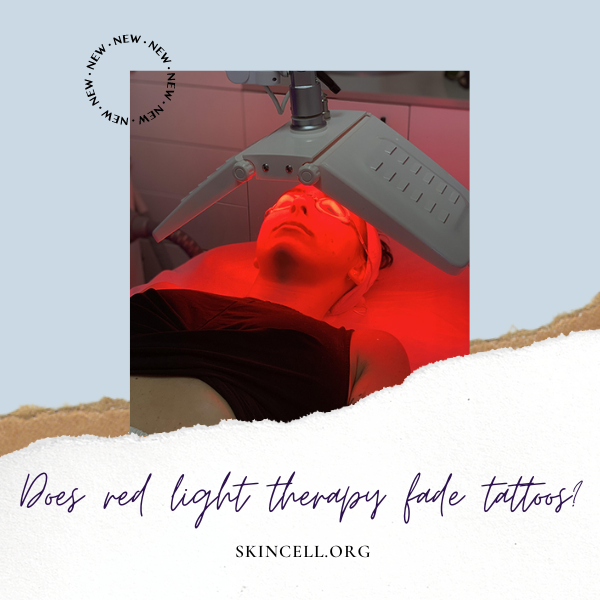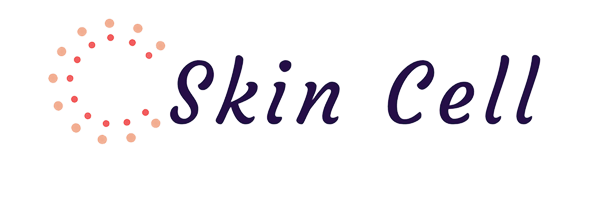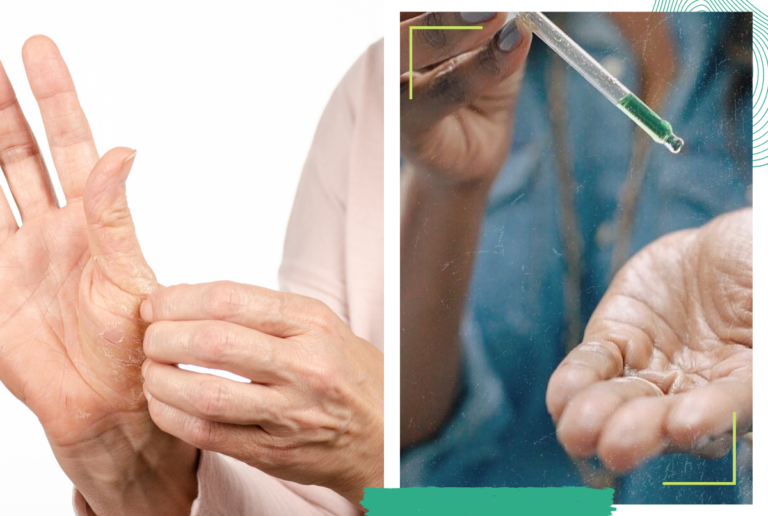Does Red Light Therapy Fade Tattoos?
Does red light therapy fade tattoos?
If you’re considering getting a tattoo, or you already have one that you regret, you may have heard of red light therapy as a potential solution. Red light therapy is a non-invasive procedure that uses low-level wavelengths of light to promote healing and rejuvenation of the skin.
It has been used to treat a variety of skin conditions, from acne to wrinkles, and is now being explored as a possible treatment for tattoo removal.

Understanding Red Light Therapy
Red light therapy works by stimulating the body’s natural healing processes. The low-level wavelengths of light penetrate the skin and are absorbed by the cells, triggering a series of chemical reactions that promote the production of collagen and elastin. This helps to improve the texture and tone of the skin, reduce inflammation, and promote healing.
Effects of Red Light Therapy on Skin
Red light therapy has been shown to have a number of benefits for the skin, including reducing the appearance of fine lines and wrinkles, improving skin texture and tone, and reducing the appearance of scars and stretch marks. It has also been used to treat a variety of skin conditions, including acne, rosacea, and psoriasis. However, the question remains: can red light therapy fade tattoos?
Key Takeaways
- Red light therapy is a non-invasive procedure that uses low-level wavelengths of light to promote healing and rejuvenation of the skin.
- Red light therapy has been shown to have a number of benefits for the skin, including reducing the appearance of fine lines and wrinkles, improving skin texture and tone, and reducing the appearance of scars and stretch marks.
- While red light therapy may help to fade tattoos to some extent, it is not a reliable or effective method of tattoo removal.
Understanding Red Light Therapy
If you’re considering red light therapy for tattoo fading, it’s important to understand how it works. Red light therapy is a form of photobiomodulation, which involves exposing tissues to low levels of light. This light is typically emitted from a device that uses light-emitting diodes (LEDs) to produce wavelengths of light that are absorbed by the skin.
Principles of Photobiomodulation
The principles of photobiomodulation involve the use of specific wavelengths of light to stimulate cellular processes. In the case of red light therapy, the wavelengths of light used are typically in the range of 620-700 nanometers. These wavelengths are thought to penetrate the skin and reach the mitochondria of cells, where they stimulate the production of adenosine triphosphate (ATP).
ATP is a molecule that provides energy to cells, and it is thought that increasing ATP production can help to improve cellular function and promote healing. Red light therapy is also thought to stimulate the production of collagen, which can help to improve the appearance of the skin.
Red Light Therapy vs. UV Light
It’s important to note that red light therapy is not the same as UV light therapy. UV light therapy involves exposing the skin to high levels of ultraviolet (UV) light, which can damage the skin and increase the risk of skin cancer. Red light therapy, on the other hand, uses low levels of visible light that are not thought to cause harm to the skin.
In summary, red light therapy is a form of photobiomodulation that uses specific wavelengths of light to stimulate cellular processes. It is thought to promote healing and improve the appearance of the skin. Unlike UV light therapy, red light therapy is not thought to cause harm to the skin.
Effects of Red Light Therapy on Skin
Red light therapy has been gaining popularity as a non-invasive and pain-free treatment for various skin conditions. It uses low-level wavelengths of red light to penetrate deep into the skin and promote healing, collagen production, and skin rejuvenation. Here are some of the effects of red light therapy on the skin:
Collagen Production and Skin Rejuvenation
Red light therapy has been shown to stimulate collagen production, which is essential for maintaining healthy and youthful-looking skin. Collagen is a protein that gives the skin its elasticity and firmness. As we age, collagen production decreases, leading to wrinkles, fine lines, and sagging skin. Red light therapy can help boost collagen production, resulting in firmer, smoother, and more radiant skin.
Healing and Inflammation Reduction
Red light therapy has also been shown to accelerate the healing process and reduce inflammation. It can help speed up wound healing, reduce the appearance of scars, and alleviate skin conditions such as acne and rosacea. Red light therapy works by increasing blood flow to the affected area, which promotes the delivery of oxygen and nutrients to the skin cells. It also has anti-inflammatory properties that can help reduce redness, swelling, and pain.
In conclusion, red light therapy can have a positive effect on the skin by promoting collagen production, skin rejuvenation, healing, and inflammation reduction. It is a safe and effective treatment option for various skin conditions and can be used in conjunction with other therapies for optimal results.
Red Light Therapy and Tattoo Procedures
If you’re considering getting a tattoo, or if you already have one, you may be wondering if red light therapy can fade your tattoo. Here’s what you need to know about the impact of red light therapy on tattoos.
Impact on Tattoo Ink
Red light therapy has been used to fade tattoos, but its effectiveness is limited. Tattoo ink is designed to be permanent, and it is injected deep into the skin. Red light therapy works by penetrating the skin with light waves, which can help to break down the ink particles. However, the ink particles are often too large to be broken down by red light therapy alone.
It’s important to note that red light therapy can also have a negative impact on tattoos. If you undergo red light therapy too soon after getting a tattoo, it can cause the ink to fade unevenly or cause scabbing. This can lead to a longer healing process and potentially affect the quality of the tattoo.
Tattoo Healing Enhancement
While red light therapy may not be effective at fading tattoos, it can be used to enhance the healing process after getting a tattoo. Red light therapy can help to reduce inflammation, promote blood flow, and stimulate collagen production. This can lead to faster healing times and less scarring.
If you’re considering getting a tattoo, it’s important to work with a reputable tattoo artist who can provide you with aftercare instructions. This may include using red light therapy to enhance the healing process, but it’s important to follow all aftercare instructions carefully to ensure the best possible outcome.
Overall, while red light therapy may have some benefits for tattoo healing, it is not an effective method for fading tattoos. If you’re looking to remove a tattoo, it’s best to work with a professional tattoo removal specialist who can provide you with safe and effective options.
Potential Side Effects and Risks
Risks of Red Light Therapy
While red light therapy is generally considered safe, there are some potential risks and side effects that you should be aware of before undergoing treatment.
One of the most common risks of red light therapy is infection. To minimize the risk of infection, it’s important to make sure that the area being treated is clean and free of any open wounds or sores. Additionally, the equipment used during the treatment should be properly sterilized to prevent the spread of bacteria.
Another potential risk of red light therapy is scarring. While this is rare, it can occur if the skin is traumatized during treatment. To minimize the risk of scarring, it’s important to follow all aftercare instructions provided by your healthcare provider.
Aftercare and Precautions
To minimize the risk of side effects and complications, it’s important to take proper care of your skin after undergoing red light therapy. Here are some aftercare tips to keep in mind:
-
Apply sunscreen: After treatment, your skin may be more sensitive to the sun. To prevent sunburn and further damage, apply a broad-spectrum sunscreen with an SPF of at least 30.
-
Avoid trauma: To minimize the risk of scarring, avoid picking at or scratching the treated area. Additionally, avoid any activities that could cause trauma to the skin, such as contact sports.
-
Watch for swelling: It’s normal for the treated area to be slightly swollen or red after treatment. However, if you experience excessive swelling or pain, contact your healthcare provider immediately.
Overall, red light therapy is considered safe and effective for a variety of conditions, including pain relief and skin rejuvenation. However, it’s important to be aware of the potential risks and to follow all aftercare instructions provided by your healthcare provider to minimize the risk of side effects and complications.
Comparative Analysis
Red Light Therapy vs. Laser Tattoo Removal
Laser tattoo removal has been the gold standard for removing tattoos for decades. However, it can be painful, expensive, and may cause scarring or pigment changes in the skin. Red light therapy, on the other hand, is a non-invasive, painless, and cost-effective alternative that is gaining popularity in the skincare industry.
While laser tattoo removal uses high-energy laser beams to break up the ink particles in the skin, red light therapy uses low-level wavelengths of red light to penetrate the skin and stimulate the body’s natural healing processes. This can lead to the fading of tattoos over time, although the results may not be as dramatic as with laser removal.
One study published in the Journal of Cosmetic and Laser Therapy found that red light therapy was effective in fading tattoos, with 32% of participants reporting a significant improvement in the appearance of their tattoos after just one session. However, it is important to note that the study was small and further research is needed to confirm these findings.
Ongoing Research and Future Directions
Red light therapy has been used by NASA to promote wound healing and tissue regeneration, and it is now being explored for its potential in the skincare industry. While there is still much to learn about the effectiveness of red light therapy for tattoo removal, ongoing research is promising.
One study published in the Journal of the American Academy of Dermatology found that red light therapy, when combined with a topical cream, was effective in removing tattoos in some participants. However, the study was small and further research is needed to confirm these findings.
In the future, it is possible that red light therapy could be used in combination with other treatments, such as laser tattoo removal or topical creams, to improve the effectiveness of tattoo removal. It may also be used as a standalone treatment for those who prefer a non-invasive, painless option. However, more research is needed to fully understand the potential of red light therapy for tattoo removal.
Frequently Asked Questions
Can red light therapy help with tattoo removal?
Red light therapy has been shown to help fade tattoos over time. It works by penetrating the skin and breaking up the ink particles in the tattoo. However, it is important to note that red light therapy alone may not completely remove a tattoo. It is often used in combination with other tattoo removal methods, such as laser treatments.
What are the benefits of red light therapy for skin?
Red light therapy has many benefits for the skin, including reducing the appearance of fine lines and wrinkles, improving skin texture and tone, and promoting collagen production. It can also help reduce inflammation and improve the healing of wounds and scars.
Is it safe to use red light therapy after laser tattoo treatment?
Yes, red light therapy is generally safe to use after laser tattoo treatment. It can help speed up the healing process and reduce inflammation. However, it is important to follow your doctor’s instructions and avoid overexposure to red light therapy.
What are the potential risks associated with red light therapy?
While red light therapy is generally considered safe, there are some potential risks to be aware of. These include eye damage if the therapy is used on or near the eyes, skin irritation or burns if the therapy is used for too long or at too high of an intensity, and interference with certain medications or medical conditions. It is important to consult with a healthcare professional before using red light therapy.
How does red light therapy affect the longevity of Microblading?
Microblading is a semi-permanent cosmetic tattooing technique used to create the appearance of fuller eyebrows. While red light therapy has been shown to help fade tattoos, it is unclear how it affects the longevity of microblading. It is important to consult with a licensed microblading artist for more information.
Does exposure to red light therapy contribute to the fading of scars?
Yes, red light therapy has been shown to help fade scars over time. It works by stimulating collagen production and promoting cell regeneration. However, it may take multiple sessions to see significant results, and the effectiveness of the therapy may vary depending on the severity and type of scar.






